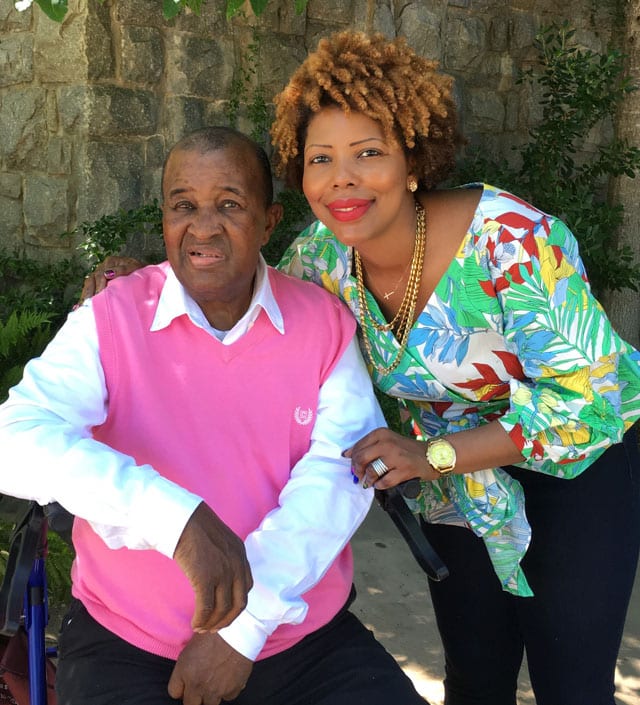
In an earlier article for Rethinking 65 about setting reasonable expectations for aging in place, I concluded with three questions:
- What are the features of a house that is a tool for lifelong living?
- How can we modify our homes to make sure they meet our needs as our health changes?
- When must we start evaluating and updating to make sure these capabilities are ready when we need them?
Over the next months, I will address these questions in articles meant to pique interest for financial planners and other professionals whose clients wish to age in place. My goal is to help you understand more about safe home preparation so you can increase your clients’ awareness and engage in more meaningful dialogues with them.
Be proactive, not reactive
The most important point is that safe home preparation is best done proactively. This isn’t just from a safety perspective, but also from cost and investment perspectives.
Making adjustments after a health incident, such as a fall, is hard to do well. It is hard to concentrate, make decisions and endure the disruption. It also tends to be more expensive. Good remodeling does not happen in a rush. And when it’s not done well, the value is hard to capture.
Seven essential activities
So back to the first question, about the functional features of a home well suited for lifelong living. I view homes through these seven activities.
Getting in and out
Many of us think about getting back into our home after some health incident or discharge. To live full lives, we must also be able to get out easily, regularly and safely for appointments and to enjoy our community.
An easy-to navigate path to a private car or public transportation is essential. An entry without steps is best, but not always possible or affordable. Steps and walkways must be in good condition, and steps need handrails. Splintered wooden steps or porch flooring, cracked concrete surfaces, stones set in grass, or other uneven surfaces need to be corrected.
Next is the entry door. The door handle and lock must be easy to operate. A lever handle is easier to grip than a knob. The keyhole should be illuminated. A keypad lock is a good idea because it may enable the resident to lock/unlock the door for deliveries and guests without having to travel to the door.
A mobility device, such as a cane, walker, scooter or wheelchair, is much easier to use if the door threshold is gently sloped or eliminated. Even a shuffling gait is aided by a low threshold.
In addition, clear space should be available next to the handle side of the door. Without this, a person using a mobility device won’t have the side-to-side and front-back maneuvering space required to open the door and get through the doorway. It’s also a good idea to have a package shelf or table within reach so the resident doesn’t have to set items on the ground while searching for their keys.
The street number should be high contrast and well-lit so visitors, delivery drivers and especially emergency crews can find the house easily.
Moving around
Moving through a home is more nuanced than people typically understand. Well placed, secure grips should be available all along a path. Though the width of a hall or doorway comes to mind, negotiating turns when mobility is impaired, with a mobility device, or with the assistance of caregiver is the most difficult part of maneuvering.
To make individual steps more discernible, create a contrast between the treads (horizonal surfaces) and risers (vertical surfaces). This can be done by applying tape strips, paint or varnish.
Installing sturdy, continuous and easy-to-grip handrails on both sides of a stairway is helpful too. If an individual is impaired on one side of their body, has an injured arm or shoulder, or is simply carrying packages, they would use one handrail going up the stairs and the opposite handrail going down.
Installing good lighting is also a must. Multiple switches or remote switching can make this convenient for the resident.
It’s also important to reduce or eliminate glare in a home. Too much light can be as bad as too little light, especially if it comes from the wrong direction. For example, glare from a window on a landing makes it really hard to see when approaching the light.
Bathroom and bedroom safety
A floor-to-ceiling pole can make it easier for someone to get in and out of bed. Not only can it help with movement, it can provide a place to pause to clear one’s head upon standing.
Getting into and out of the bathtub or shower is the most dangerous activity. When a resident and caregiver do it together, they operate almost as one. Think of a three-legged race: When either participant falls, you are out of the running. So, the shower or bathtub space should be designed with enough room for both people to work together.
Curbless showers are common in safe, accessible bathrooms because they look great, are safer to walk into and can accommodate a wheelchair, And with no curb separating the shower from the general area of the room, there’s more room for the caregiver and mobility devices.
Assistance with transferring on and off the toilet is another dangerous and critical task. It’s much safer and easier for the resident and caregiver when this is factored into the design criteria for the bathroom. Sinks designed to accommodate seated users are another consideration.
And now a word on grab bars. Hotels commonly install them along the long wall of a tub. This is behind you as you climb out of the tub, providing almost no value when you are wet and slippery. The best location — I hate to be snarky — is where you will reach to grab it if you are about to fall. Besides grab bars, anything projecting from the bathroom walls, (towel bars, for example) should be able to support your weight.
Many falls occur on the way to the bathroom in the middle of the night. Older eyes adjust to light more slowly than younger eyes. Consider low-level path lighting to guide residents (like the floor lighting in airplanes and movie theaters.)
Preparing and eating meals
Some people like to cook and some don’t. Everyone needs to eat.
Arranging a kitchen so someone can sit when prepping and cooking is important so the decision to cook is not based on strength, stamina or balance. Consider the ease of moving food and dishes (clean and dirty) to and from the oven, stove, sink and counter. Chairs should be easy to position at the counter or table, and the resident should be able to easily rise from these chairs.
Make sure there is a contrast between the edge of the counters and the floors so residents with poor depth perception can see the distinction (as we discussed earlier with treads and risers). Task and general lighting in the kitchen must be sufficient.
Reading the mail, sorting pills and other tasks
These necessary functions should be planned for. They often occur at the kitchen table. Is that because the lighting is (hopefully) adequate or because the chair and table make it easy to get up and down?
Entertainment: reading, music, TV, guests, etc.
We all have our favorite activities. These joys of life should not be limited by mobility or design. Proper lighting to read; access to the stereo, and comfortable seating from which standing up is not difficult should all be on hand. Alexa and other voice control mechanisms have made these much easier.
Enjoying the outdoors
There is growing evidence that viewing and experiencing nature is beneficial to recovery and general health. For individuals who enjoy nature, convenient and easy access can be the difference between a life well lived and one only endured.
A porch with an overhead fan allows you to be outdoors when it is warm. Add lighting and the porch can be used in the evening. Screens on that porch keep bugs at bay. Comfort to enjoy the outdoors should be a factor when preparing a lifelong home.
True impact
The points above are not exhaustive. They do not include any details, specifications or product recommendations. I caution you not to provide them to an inexperienced, or worse, disinterested contractor, handy family member, neighbor or handyperson as a to-do list.
I have witnessed too many home-modification projects that failed to meet the homeowners’ intentions. In many cases, the designers and contractors were well meaning and the work was done well. But the details and specifications were based on conventional wisdom rather than experience with the real needs and impacts of mobility difficulties, assistive devices and caregiving.
One time when I was staffing an aging-in-place booth at a conference, a guy came up to me and proudly showed me pictures of the bathroom modifications he had just completed in his home. Unfortunately, I now use those pictures as “what not to do.” The modified bathroom included all the right elements but they were assembled and organized in ways that would not enhance safety and accessibility.
Without getting too deep into the construction weeds, financial advisors can learn about the types of home modifications that work, when people should do them, how to finance them and how to get them done well. Advisors who share this information in their planning efforts can help generate real impact for clients.
Louis Tenenbaum is a recognized authority, speaker, consultant and advocate driving policy and investment for aging in place. He founded the HomesRenewed Coalition to bring together consumers, businesses, nonprofits and policy stakeholders to increase the nation’s aging-in-place capacity. He partners with financial advisors to help their clients age in place. Louis can be reached at louis@homesrenewed.org.






